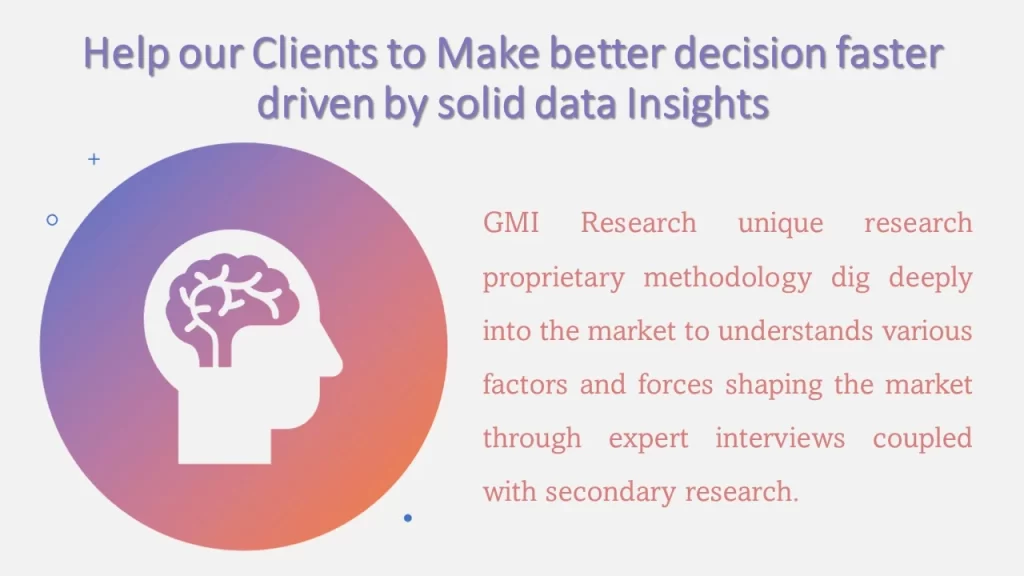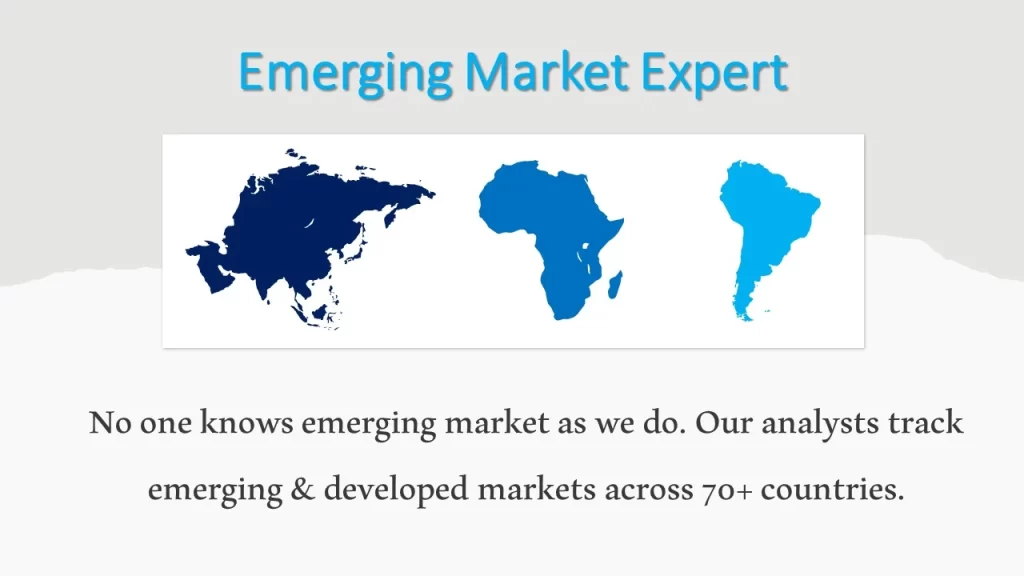5G Industrial IoT Market Size & Analysis Report by Type, By End-User, and By Region – Global Opportunities & Forecast 2022-2029
5G Industrial IoT Market Size & Analysis Report by Type (Hardware, Solutions, and Services), By End-User (Automotive & Transportation, Consumer Electronics, Healthcare, Agriculture, Oil & Gas, Manufacturing, and Others), and By Region
GMI Research analysis indicates that the 5G Industrial IoT Market estimated at USD 780 million in 2021 and is slated to register a double digit CAGR of 27.1% over the period, 2021-2028 and is projected to reach USD 5,312 million in 2029.

To have an edge over the competition by knowing the market dynamics and current trends of “5G Industrial IoT Market”, request for Sample Report here
Market Dynamic
Key Drivers and Emerging Trends
Primary functions of business 5G cellular systems are now in progress. The execution of IoT and 5G has been boosted by various aspects, including increased demand from businesses and consumers and more economical devices. Significant operators heavily investing in 5G technology, transportation, and a spectrum of global standards are also assisting in growing market interest in the IoT. In addition, artificial intelligence, edge computing, and cloud computing will enhance handling larger sets of data once. Further 5G improvements, such as network slicing and non-public networks, will eventually help realize the huge quantity of connected devices. Mobile operators are using mobile IoT skills to link millions of industries, devices, and systems in China. Furthermore, in 2019, as 5G NR eMBB services launched Wave and sub 6 Gigahertz (GHz) spectrum, LTE IoT will continue to evolve and manage the new 5G network seamlessly. For example, LTE IoT is agnostic to core networks — either LTE core (EPC) or 5G core (NextGen or 5GC), which will support LTE-IoT evolution. LTE IoT deployments will be supported by 5G NR in new 5G spectrum bands, allowing 5G NR IoT to leverage LTE IoT investments fully.
As per the 5G Industrial Iot Market Analysis, rising IoT devices across manufacturing industries have increased the data traffic, driving the 5G industrial IoT market. Emerging need for preventive maintenance for major equipment’s as well as the increasing number of M2M connections will expand the market size. Increasing adoption of 5G Industrial IoT in the manufacturing industry to automate the production process and offer great precision and reduce errors will drive the 5G Industrial IoT Market Size.
Restraint in the 5G Industrial IoT Market
However, lack of standardization in IoT is a major factor that is likely to hamper the market’s overall growth.
Do you want to know more about the Research process and detailed Methodology, Request Research Methodology of this report
Type – Segment Analysis
Based on the type, hardware is witnessed to grow at a higher CAGR in the market over the forecast period. IoT hardware includes a broad range of devices such as devices for routing, bridges, sensors among others. IoT devices helps in management of key tasks and purposes such as security, system activation, action specifications, communication, and recognition of support-specific goals and actions.
End-User – Segment Analysis
Based on the end-user, healthcare is witnessed to grow at a higher CAGR in the market over the forecast period. This is due to the growing adoption of technology in healthcare for treatment and medication, which has significantly helped in the expansion of the market. In addition, smart wearable devices use IoT for monitoring health vitals. Manufacturing end-user segment is forecast to witness a faster share over the forecast period. This is because the advent of 5G has expediated the development of smart factories with low-latency, high potency, and wireless flexibility.
In case, any of your pain points areas are not covered in the current scope of this report, Request for Free Customization here
Regional – Segment Analysis:
Based on the regional coverage, Asia-Pacific is witnessed to grow at a higher CAGR in the market over the forecast period. This is due to the increasing penetration of the internet in countries like India, China, and Japan, which has aided in shifting the overall market landscape. In addition, with the increasing focus on digitization, countries such as India has attracted several IoT companies from big scale companies to start-ups. The government of India has implemented an IoT policy that aims to create an IoT ecosystem in the country and incentivize the players in it by creating a $15 billion industry by the end of 2021. China is expected to lead the market over the coming years, owing to the increasing research and development activities and the presence of international players. The Association of Southeast Asian Nations (APAC) witnessed a significant surge in the adoption of 5G technology and the establishment of manufacturing industries within the area. Also, government has taken several actions to develop the technology by providing the required concessions for infrastructure and research & development.

Top Market Players
Various notable players operating in the market, include, Qualcomm Technologies, Inc., Ericsson, Nokia, Huawei Technologies Co., Ltd., Cisco Systems, AT&T, IBM Corporation, Microsoft Corporation, Siemens AG, Verizon, among others.
Key Developments:
-
- In 2022, Ericsson collaborated with Vodafone UK to establish an organization cut on 5G SA involving single RAN work with high-transfer capacity and low-inertness network to be conveyed to computer generating reality use case in a retail location.
- In 2022, Cisco & Tech Mahindra entered into a strategic partnership with 5G infrastructure with routed optical networking. Cisco is proficient in routed optical fiber whereas Tech Mahindra has expertise in IP-based, software driven 5G networks.
- In 2021, AT&T introduced its 5G+ services in several areas and venues across Tampa, such as Raymond James stadium, Channel District, and Tampa International Airport in the US.
- In 2021, CMIoT, a subsidiary of China Mobile Communications Group, launched IoT OS called OneOS to support 5G network standards with remarkable characteristics including scalable, cross-platform, low energy consumption, and high safety.
- In 2019, Ericsson entered into a strategic agreement with Ooredoo Group, for the supply of 5G radio core and other products.
Segments covered in the Report:
The global 5G Industrial IoT market has been segmented based on type, end-user, and regions. Based on type, the market is segmented into hardware, solutions, and services. Based on end-user, the market is segmented into automotive & transportation, consumer electronics, healthcare, agriculture, oil & gas, manufacturing, and others.
For detailed scope of the “5G Industrial IoT Market” report request a Sample Copy of the report
Key questions answered in this research report:
-
- At what pace is global 5G Industrial IoT market growing? What will be the growth trend in the future?
- What are the key drivers and restraints in 5G Industrial IoT market? What will be the impact of drivers and restraints in the future?
- What are the regional revenues and forecast breakdowns? Which are the major regional revenue pockets for growth in the global 5G Industrial IoT market?
- What is the Global 5G IoT Market Size in 202?
- Which Type generated maximum revenues in 2021 and identify the most promising Type during the forecast period?
- What are the various End-User areas of global 5G Industrial IoT market and how they are poised to grow?
- What companies are the major participants in this market and their business strategies, how does the competitive landscape look like?
|
Report Coverage |
Details |
| Market Revenues (2021) |
USD 780 Million |
| Market Base Year |
2021 |
| Market Forecast Period |
2022-2029 |
| Base Year & Forecast Units |
Revenues (USD Million) |
| Market Segment | By Type, By End-User, By Region |
| Regional Coverage | Asia Pacific, Europe, North America, and RoW |
| Companies Profiled | Qualcomm Technologies, Inc., Ericsson, Nokia, Huawei Technologies Co., Ltd., Cisco Systems, AT&T, IBM Corporation, Microsoft Corporation, Siemens AG, Verizon, among others; a total of 10 companies covered. |
| 25% Free Customization Available | We will customize this report up to 25% as a free customization to address our client’s specific requirements |
Market Segmentation
Global 5G Industrial IoT Market by Type
-
- Hardware
- Solutions
- Services
Global 5G Industrial IoT Market by End-User
-
- Automotive & Transportation
- Consumer Electronics
- Healthcare
- Industrial
- Agriculture
- Oil & Gas
- Manufacturing
- Others
Global 5G Industrial IoT Market by Region
-
- North America 5G Industrial IoT Market (Option 1: As a part of the free 25% customization)
- By Type
- By End-User
- US Market All-Up
- Canada Market All-Up
- Europe 5G Industrial IoT Market (Option 2: As a part of the free 25% customization)
- By Type
- By End-User
- UK Market All-Up
- Germany Market All-Up
- France Market All-Up
- Spain Market All-Up
- Rest of Europe Market All-Up
- Asia-Pacific 5G Industrial IoT Market (Option 3: As a part of the free 25% customization)
- By Type
- By End-User
- China Market All-Up
- India Market All-Up
- Japan Market All-Up
- Rest of APAC Market All-Up
- RoW 5G Industrial IoT Market (Option 4: As a part of the free 25% customization)
- By Type
- By End-User
- Brazil Market All-Up
- South Africa Market All-Up
- Saudi Arabia Market All-Up
- UAE Market All-Up
- Rest of world (remaining countries of the LAMEA region) Market All-Up
- North America 5G Industrial IoT Market (Option 1: As a part of the free 25% customization)
Major Players Operating in the 5G Industrial IoT (Option 5: As a part of the Free 25% Customization – Profiles of 5 Additional Companies of your Choice)
-
- Qualcomm Technologies, Inc.
- Ericsson
- Nokia
- Huawei Technologies Co., Ltd.
- Cisco Systems
- AT&T
- IBM Corporation
- Microsoft Corporation
- Siemens AG
- Verizon
Frequently Asked Question About This Report
5G Industrial IOT Market [UP2144-001001]
An increased demand from businesses and consumers and more economical devices are the key factors for the growth of 5G Industrial IoT Market.
The Asia-Pacific is projected to grow at a higher CAGR in the market over the forecast period. This is due to the increasing penetration of the internet in countries like India, China, and Japan, which has aided in shifting the overall market landscape.
The Asia-Pacific is projected to grow at a higher CAGR in the market over the forecast period. This is due to the increasing penetration of the internet in countries like India, China, and Japan, which has aided in shifting the overall market landscape.The growth rate of 5G Industrial IoT Market during 2021-2028 is 79.1%.
The growth rate of 5G Industrial IoT Market during 2021-2028 is 79.1%.The hardware is witnessed to grow at a higher CAGR in the market over the forecast period. IoT devices helps in management of key tasks and purposes such as security, system activation, action specifications, communication, and recognition of support-specific goals and actions.
- Published Date: Oct - 2021
- Report Format: Excel/PPT
- Report Code: UP2144-001001
Licensing Options
Single-User License:
The report is used by the purchaser (One Individual) only
Multi-User License:Report is shared with maximum 5 users (employees) including the purchaser of the purchasing corporation only
Corporate License:
Report is shared with unlimited user (employees) of the purchasing corporation only
The report is used by the purchaser (One Individual) only
Multi-User License:Report is shared with maximum 5 users (employees) including the purchaser of the purchasing corporation only
Corporate License:
Report is shared with unlimited user (employees) of the purchasing corporation only
5G Industrial IoT Market Size & Analysis Report by Type, By End-User, and By Region – Global Opportunities & Forecast 2022-2029
$ 4,499.00 – $ 6,649.00
Why GMI Research







